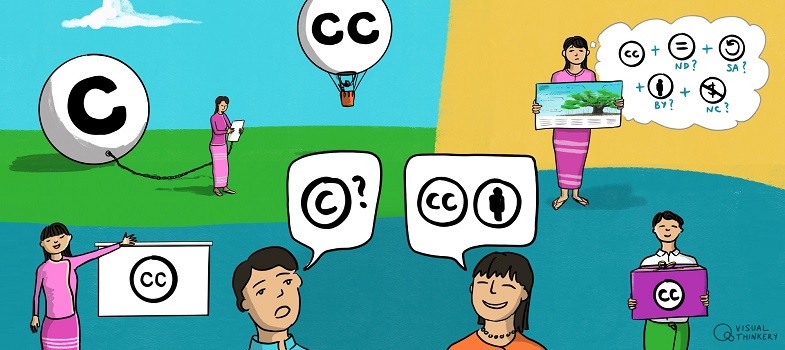Your own practice
You can find a range of open access journals via the Directory of Open Access Journals (DOAJ) [Tip: hold Ctrl and click a link to open it in a new tab. (Hide tip)] . Perhaps you could share some of these with your colleagues? Or highlight a selection for a particular discipline in the library?
Earlier we looked at evaluating openly licensed resources. In much the same way, it is a good idea to evaluate different journals before deciding where to publish research. If you are a librarian, you may want to advise colleagues what to consider before they decide where to publish. As we saw earlier, authors who transfer copyright may lose the ability to post their research on their own websites. The Think, Check, Submit checklist provides a useful list of essential things to consider before submitting research to any journal. There are also tools such as HowOpenIsIt? which can help you assess how ‘open’ a journal is. You might want to consider sharing these resources with colleagues who may be interested in publishing their research. If you publish your own university journal, you might want to consider applying a Creative Commons license to the journal - discuss this further with the editorial board.
Some universities have open access publishing policies. For academic librarians interested in developing an open access policy for their university or institution, the Harvard Open Access Project has developed a toolkit. Yezin Agricultural University reused this policy wording when adopting their policies. University of Mandalay, University of Yangon, Yadanabon University and Yangon University of Economics also have open access policies and other universities participating in MERAL are in the drafting process.
Librarians can also help scholars understand how different publishing options affect the audience and prestige of their work. Impact factor is a primary metric of prominence of a journal or publication, measured by a journal’s average number of citations. Because impact factors are not necessarily a reliable metric of a journal’s importance, some publishers like Nature are reconsidering the importance of impact factors for journals. Many open access scholars encourage systems like altmetrics to provide another way of thinking about impact beyond the traditional metrics. In 2017, 1science released a study finding that on average, open access papers produce a 50% higher research impact than strictly paywalled papers. You can find out more about the benefits of open access in the additional resources section.
Open access publishing is one way you can be ‘open’ in your research. To find out more about open science and open research, see the additional resources section.
Open access in Myanmar
